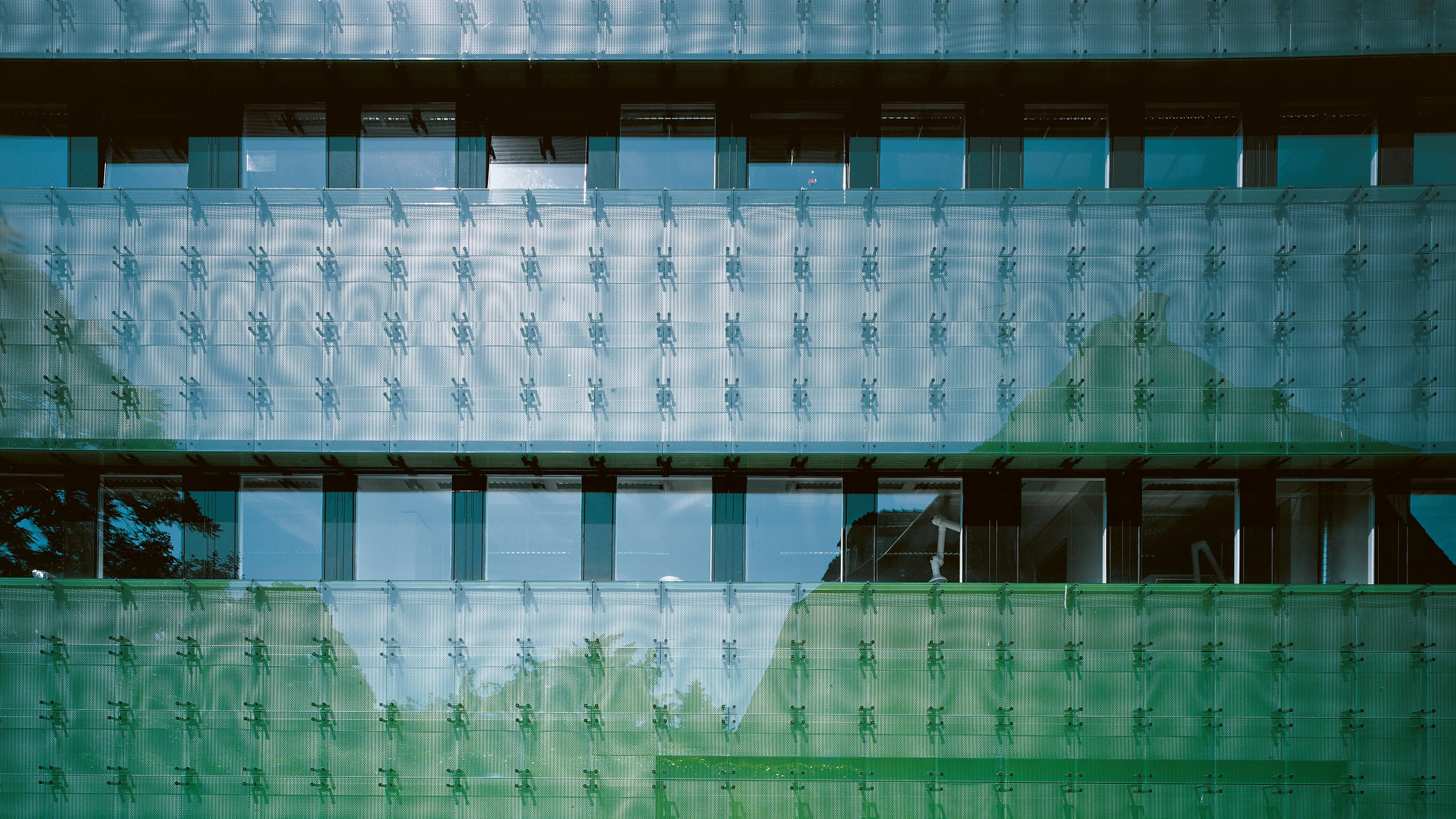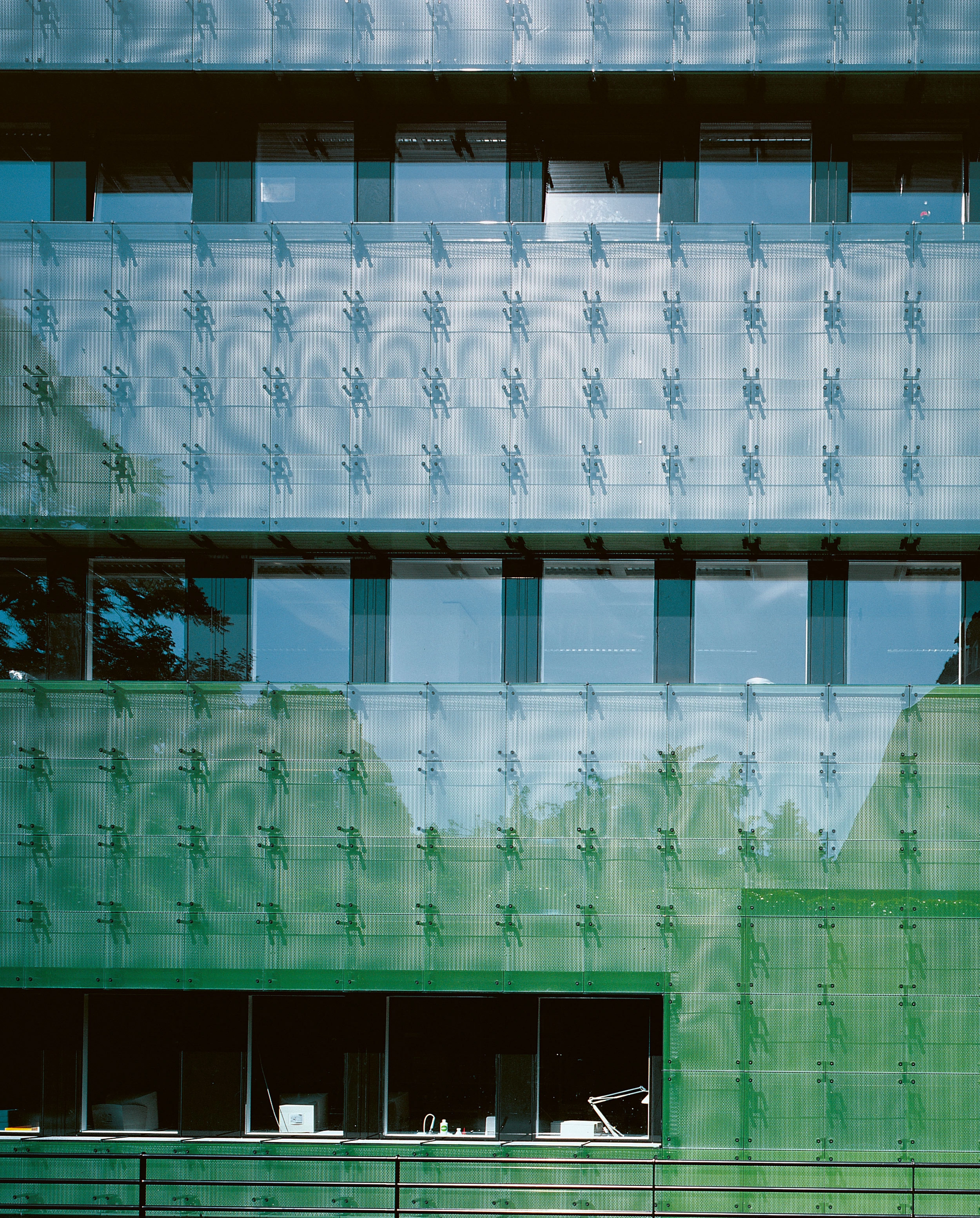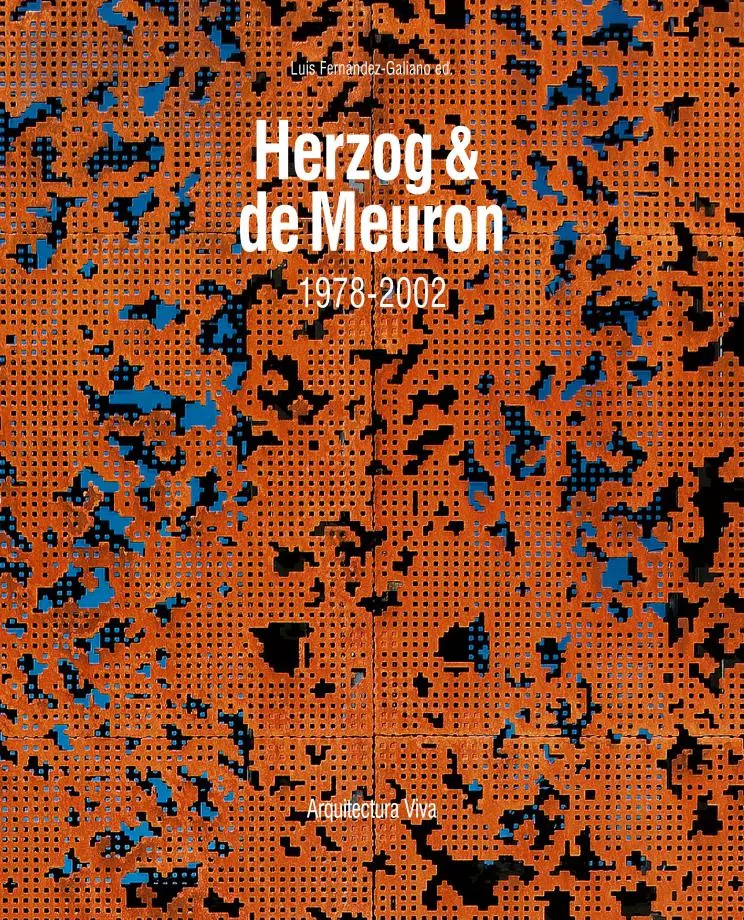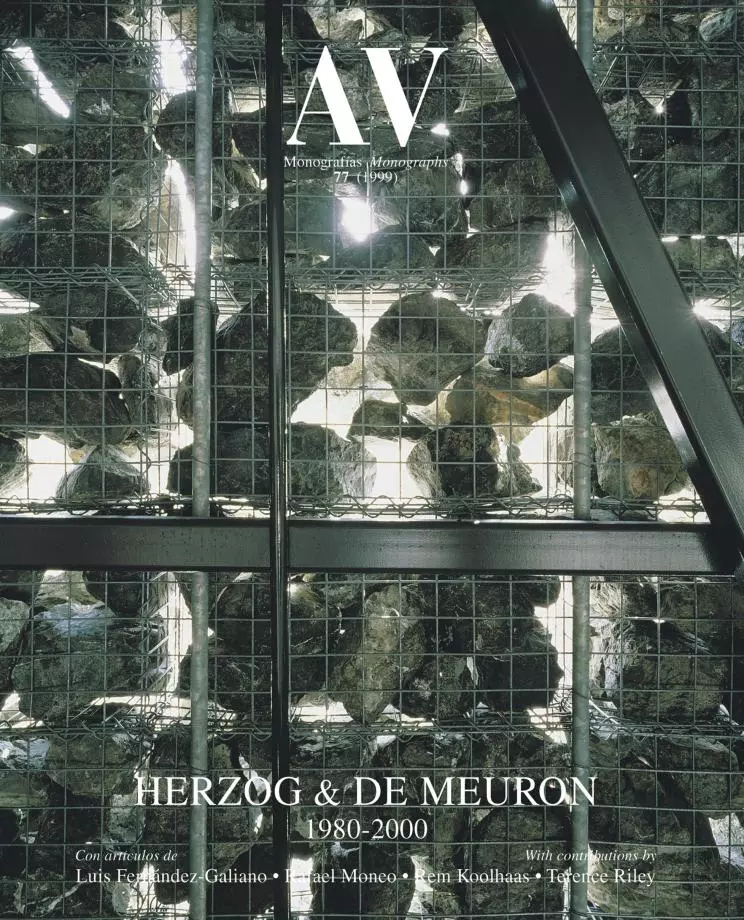Institute for Hospital Pharmaceuticals, Rossettiareal, Basel
Herzog & de Meuron- Type Health Industry Industrial Shed
- Material Glass Screenprinted glass
- Date 1995 - 1998
- City Basel
- Country Switzerland
- Photograph Margherita Spiluttini

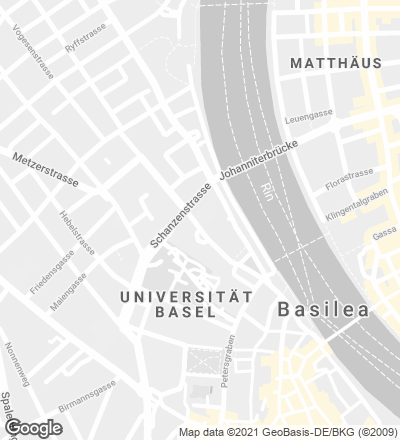
The canton Hospital in Basel is an organic collection of buildings with an accumulation of constructive and compositive types that does not reveal a structured idea of the complex. The pharmaceutical centre where medicines are produced and supplied for the hospital, is set in part of one of these discontinuous blocks. The new facilities are grouped into an independent body with a frontage that is subjected to street facade alignments. Partially influenced by the line of several underground cellars, the appendices of the ground plan respond to the various incidents in the courtyard in an attempt to bestow meaning on the open spaces.
An envelope of screenprinted glass blurs the irregular prism resulting from the upward extrusion of the plan. Like a transparent halo, this screenprinted skin with a pattern of green dots traps the thirty centimeters of air separating it from the thermal line of the building. The perforations in the aluminium sheets that cover the insulation follow a differently sized grid which, when superimposed on the glass dots and the tie bars, produces a moiré effect, optically diminishing the construction size. This is not a standard curtain wall hiding offices. Here, the transparent panes are not installed to establish a relationship between interior and exterior, but rather to exploit its optical qualities over the opaque materials. The changing angle of light presents the pharmaceutical centre as a compact solid, a reflection of the surrounding trees, or an ethereal body that circumspectly reveals the events taking place inside. The windows, providing the office workers with outside views, drill through this tense surface, displaying their composite layers. A panel of artificial ivy indicates the staff entrance and is used to support the vegetation climbing up the facade in a visual allegory of the synthetic processes used within the building to turn plants into medicine.
The 10,000 square metre floor space is divided into four aboveground storeys and four basements used for storage. The setbacks and projections of the outline segregate the staff and goods entrances and help to qualify the use of the open spaces. The different work areas – offices, laboratories, production and packaging rooms – are distributed around a central courtyard with a pond of algae which multiplies the glazed reflections of the facades in a further allusion to this synthesis of nature and artificiality that summarizes the function of the pharmacy.[+][+]
Cliente Client
Baudepartement Kanton Basel-Stadt
Arquitectos Architects
Jacques Herzog, Pierre de Meuron, Harry Gugger, Christine Binswanger
Colaboradores Collaborators
M. Tinner, R. Bachmann, A. Boss, M. Gnehm, M. Haefelfinger, K. Kovarbasic, K. Omi, P. Tschumi, H. Vogt
Consultores Consultants
Walter, Mory, Meier (estructura structure); Emmer Pfenninger (fachada facade)
Fotos Photos
Margherita Spiluttini

